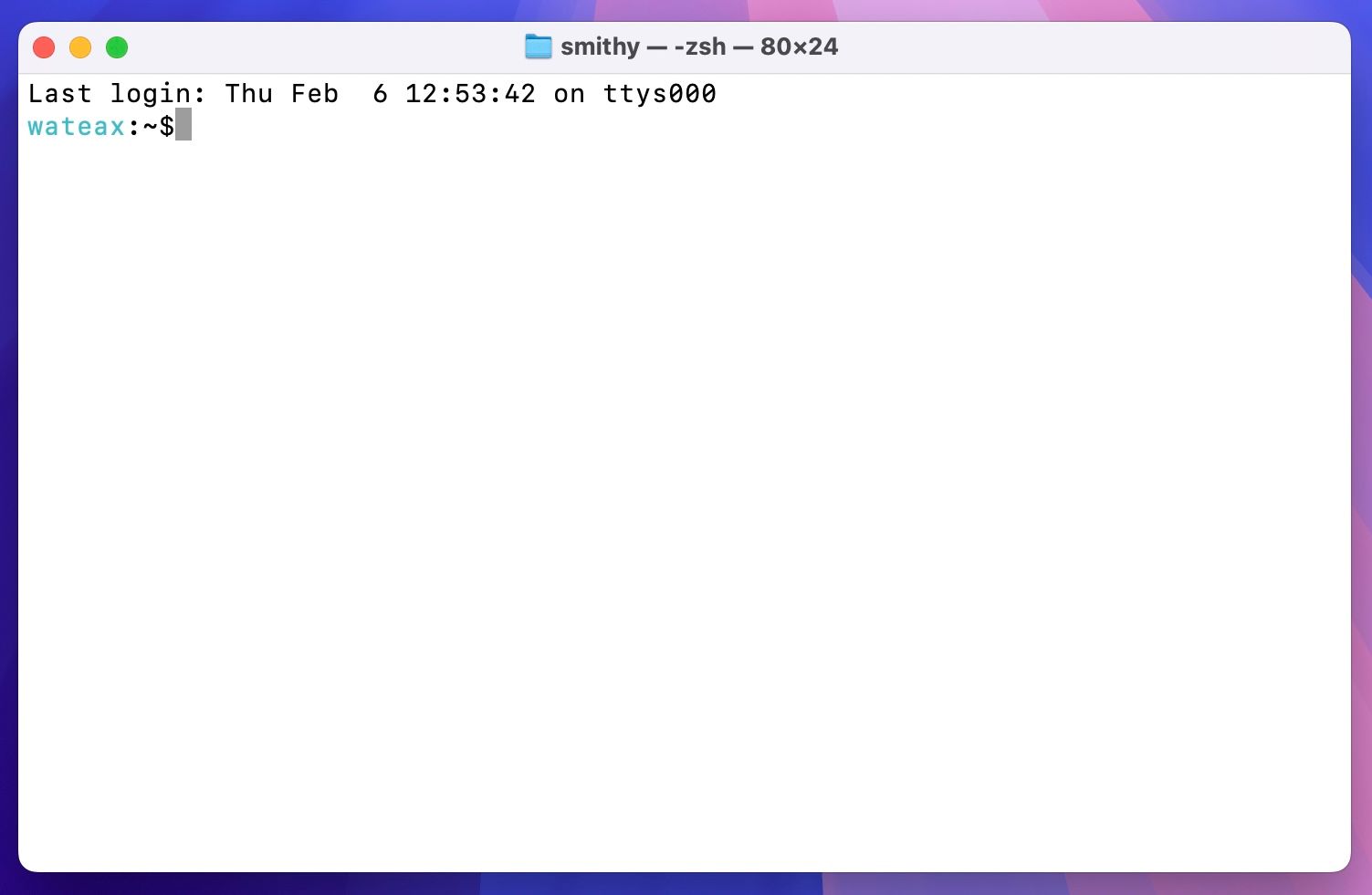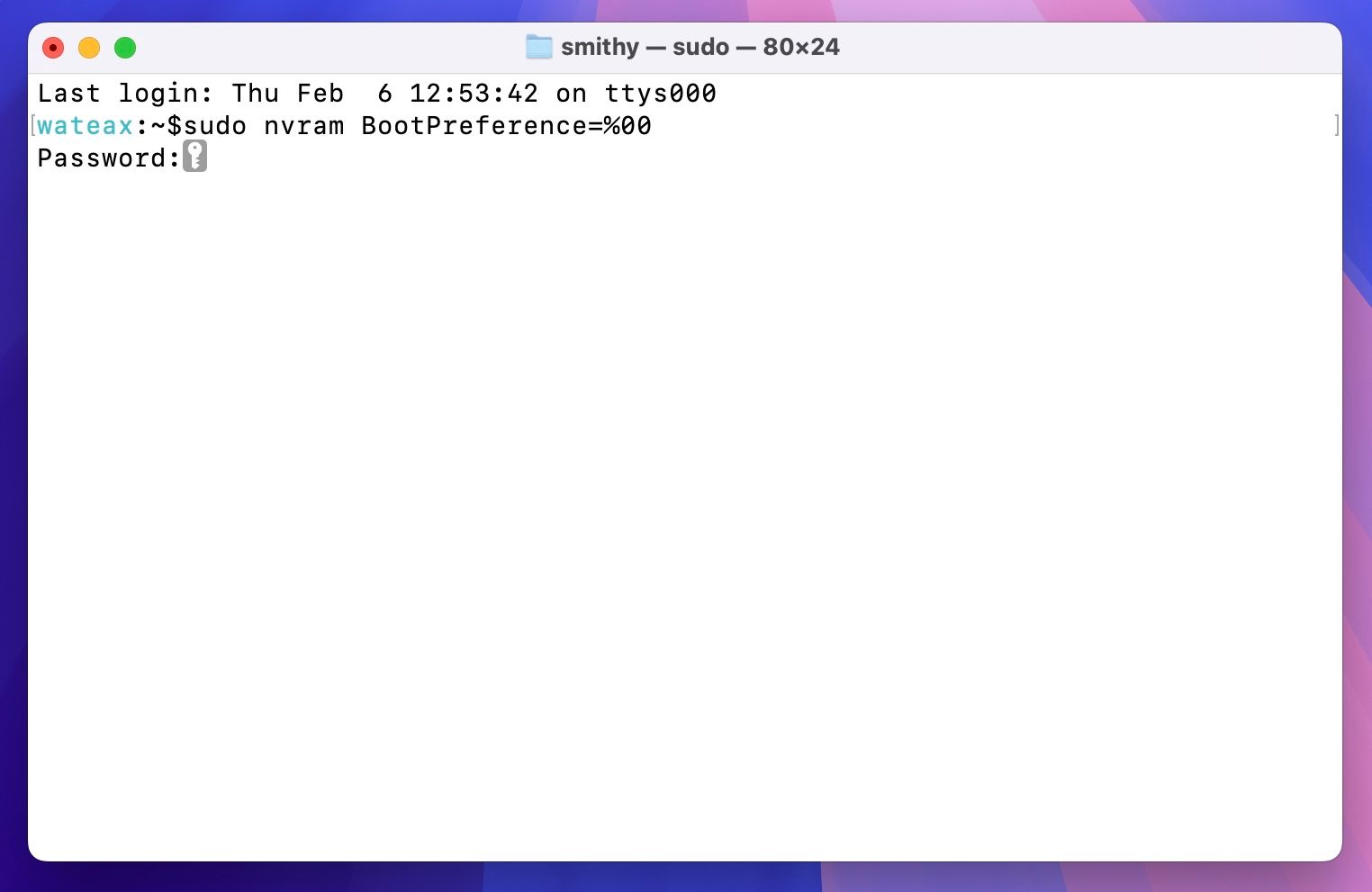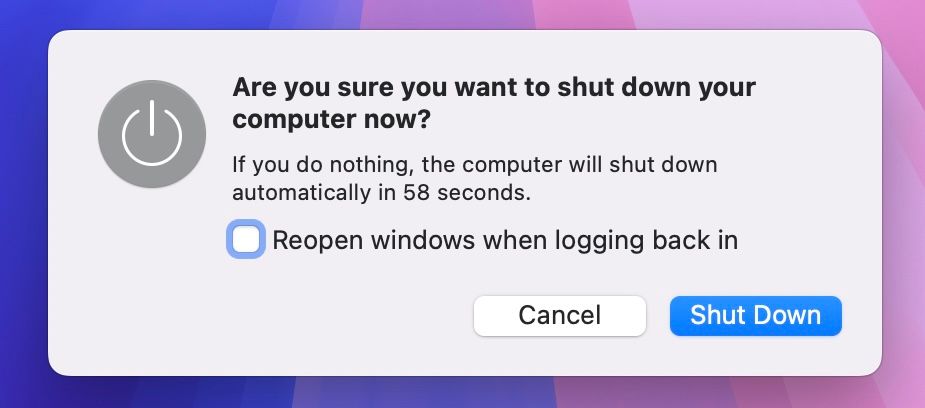Summary
- You can disable auto-boot on an Apple silicon MacBook when connecting to power, when opening the lid, or both using a Terminal command.
- You might want to do this if you’re sick of your Mac starting up when you clean the screen, when you’re in an environment that requires you to show your Mac is off, or when performing maintenance.
- You can also do this for older Intel-powered MacBooks by running a different command.
You’ve probably noticed that your MacBook will boot when you open the lid or connect it to power. While convenient, this behavior isn’t ideal for everyone. Here’s how to turn off the auto-boot feature on your MacBook and why you might want to do so.
How to Disable Auto Boot on an Apple Silicon MacBook
Disabling the auto-boot feature on an Apple silicon-powered (M1 chip or later) MacBook is easy. Ensure it’s running on macOS Sequoia 15.0 or later and follow the steps below.
Launch the Terminal app on your MacBook. You can find it in the Utilities folder under Launchpad, under Applications > Utilities in Finder, or by looking up “Terminal” in Spotlight Search.
Now, you can choose to disable auto-boot when opening the lid, connecting to power, or both. Depending on what you prefer, execute any of the commands below by typing or copying them into the Terminal app window and hitting the Return key.
If you want to prevent your MacBook from starting up when opening the lid and connecting to power:
sudo nvram BootPreference=%00
To prevent startup only when opening the lid:
sudo nvram BootPreference=%01
For preventing startup only when connecting to power:
sudo nvram BootPreference=%02
When prompted, enter your administrator password and hit Return.
You can now exit the Terminal app. Verify if the auto-boot feature is disabled. First, turn off your MacBook by clicking the Apple icon in the menu bar, selecting “Shut Down,” and clicking the “Shut Down” button on the confirmation prompt.
Once it powers down, close the lid. Wait for a few seconds and open the lid or connect the MacBook to power. If it doesn’t boot up with either or both actions, you’ve successfully turned off the auto-boot feature on your MacBook.
You’ll now need to press the power (Touch ID fingerprint sensor) button to power it on. However, if it does turn on automatically, it’s possibly because you might not have run the command correctly. Copy the correct command and try running it again. If you still don’t have any joy, ensure you have at least macOS 15.0 running under Apple > About This Mac.
Going forward, if you want to restore the auto-boot feature on your MacBook, you can undo the change easily. Go back into the Terminal app and run the command below as you did previously:
sudo nvram -d BootPreference
What if You Own an Intel-Powered MacBook?
If you’re using one of the older, Intel-powered MacBooks, you can disable the auto-boot feature, too. However, you’ll need to run a different command.
With the Terminal app open on your MacBook, type the following command and hit Return:
sudo nvram AutoBoot=%00
Authenticate yourself with your administrator password when prompted. If you ever wish to revert, you can do that by running this command:
sudo nvram AutoBoot=%03
Why Disable Auto Boot on Your MacBook?
The auto-boot feature eliminates the need to manually press the power button on your MacBook to turn it on. However, there are scenarios where you’d want to have the feature disabled.
This could be when, for instance, you’re cleaning your MacBook’s screen or keyboard, as it’ll help improve the screen’s visibility and prevent accidental input, respectively. Similarly, you’d also prefer having the feature turned off at times when you want to charge your MacBook without waking up the screen. Or when you’re required to show your laptop is completely powered down, perhaps in restricted areas or workplaces with strict policies.
Lastly, this setting is something you should use if you ever open your MacBook’s chassis to clean inside it or to perform repairs.
Automatic startup is a convenient feature, but it’s nice to have the option of using it. Remember that turning off the auto-boot feature won’t impact your MacBook’s auto-wake functionality. This means you’ll still be able to wake your MacBook up from sleep using a connected keyboard and trackpad (or mouse).







